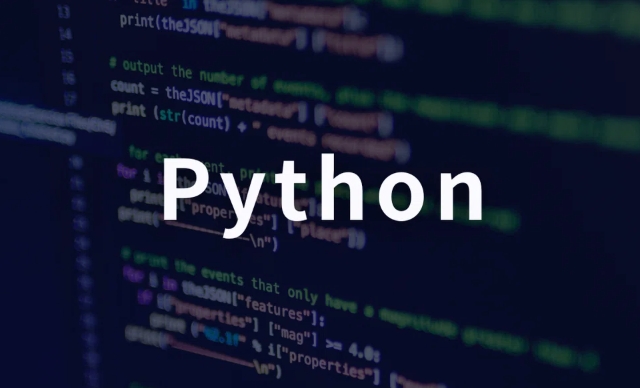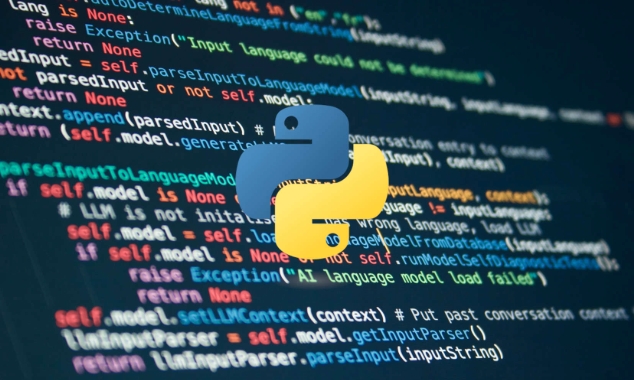Python for Quantum Machine Learning
To get started with quantum machine learning (QML), the preferred tool is Python, and libraries such as PennyLane, Qiskit, TensorFlow Quantum or PyTorch Quantum are installed; then familiarize yourself with the process by running examples, such as using PennyLane to build a quantum neural network; then implement the model according to the steps of data set preparation, data encoding, building parametric quantum circuits, classic optimizer training, etc.; in actual combat, you should avoid pursuing complex models from the beginning, paying attention to hardware limitations, adopting hybrid model structures, and continuously referring to the latest documents and official documents to follow up on development.

Quantum machine learning (QML) is a cutting-edge field that combines quantum computing and machine learning, and Python, as the most mainstream programming language, has naturally become the first tool to get started with QML. If you are already familiar with Python and have some understanding of quantum computing or machine learning, you already have the foundation to explore QML.

Install the necessary libraries and environments
To start using Python for quantum machine learning, you first need to install some commonly used libraries:
- PennyLane : Provided by Xanadu, designed for quantum machine learning, supports a variety of quantum simulators and real devices.
- Qiskit : The quantum computing framework developed by IBM also supports some machine learning extensions.
- TensorFlow Quantum / PyTorch Quantum : The quantum integration module officially provided by Google and PyTorch is suitable for people with existing ML foundation to quickly get started.
The installation method is generally very simple, such as using pip to install PennyLane:

pip install pennylane
These libraries usually come with tutorials and examples. It is recommended to run a few demos first to see the effects, such as building a simple quantum neural network model.
Build the first QML model
Implementing a quantum machine learning model in Python, the basic process includes:

- Prepare classic datasets (such as Iris, MNIST)
- Encoding classical data into quantum states
- Build Parameterized Quantum Circuit (PQC) as the core of the model
- Enter the quantum output result into the classical optimizer for training
Taking PennyLane as an example, you can define a quantum circuit as a differentiable function and then train it with gradient descent and other methods. This method is very similar to traditional neural networks, except that the quantum layer is used in the middle.
To give a simple example: If you want to determine whether a quantum state belongs to a specific category, you can define a parameter-containing sub-circuit, input encoded data, output a measurement value, and then optimize the parameters through a classical loss function.
The key to this process is to understand how to "map" classical data onto qubits, which is called "data encoding". Common angular coding, amplitude coding and other methods will affect the expressiveness of the model.
Practical skills and precautions
When doing QML projects, there are several common but easy to ignore points to pay attention to:
- Don't pursue complex models from the beginning : quantum resources are limited, and small-scale experiments are easier to debug.
- Focus on hardware limitations : Most people are currently developing with simulators, but actual deployment requires considering noise and the number of qubits.
- Mixed models are more practical : treating the quantum part as a feature extractor, and combining with traditional neural networks, it is often more effective than pure quantum models.
- Reference papers and official documents : QML is developing rapidly, new methods are emerging one after another, and it is important to keep it updated.
In addition, several learning resources are recommended:
- PennyLane Tutorial
- Qiskit Machine Learning Module
- There are many running TFQ examples on Google Colab
Basically that's it. Python has a mature ecosystem in quantum machine learning and the tool chain is complete, but it still takes some time to understand and practice it truly mastered. It is not complicated at the beginning, but the details are easy to ignore, so just take it slowly.
The above is the detailed content of Python for Quantum Machine Learning. For more information, please follow other related articles on the PHP Chinese website!

Hot AI Tools

Undress AI Tool
Undress images for free

Undresser.AI Undress
AI-powered app for creating realistic nude photos

AI Clothes Remover
Online AI tool for removing clothes from photos.

Clothoff.io
AI clothes remover

Video Face Swap
Swap faces in any video effortlessly with our completely free AI face swap tool!

Hot Article

Hot Tools

Notepad++7.3.1
Easy-to-use and free code editor

SublimeText3 Chinese version
Chinese version, very easy to use

Zend Studio 13.0.1
Powerful PHP integrated development environment

Dreamweaver CS6
Visual web development tools

SublimeText3 Mac version
God-level code editing software (SublimeText3)

Hot Topics
 1794
1794
 16
16
 1740
1740
 56
56
 1591
1591
 29
29
 1474
1474
 72
72
 267
267
 587
587
 How to use PHP combined with AI to achieve text error correction PHP syntax detection and optimization
Jul 25, 2025 pm 08:57 PM
How to use PHP combined with AI to achieve text error correction PHP syntax detection and optimization
Jul 25, 2025 pm 08:57 PM
To realize text error correction and syntax optimization with AI, you need to follow the following steps: 1. Select a suitable AI model or API, such as Baidu, Tencent API or open source NLP library; 2. Call the API through PHP's curl or Guzzle and process the return results; 3. Display error correction information in the application and allow users to choose whether to adopt it; 4. Use php-l and PHP_CodeSniffer for syntax detection and code optimization; 5. Continuously collect feedback and update the model or rules to improve the effect. When choosing AIAPI, focus on evaluating accuracy, response speed, price and support for PHP. Code optimization should follow PSR specifications, use cache reasonably, avoid circular queries, review code regularly, and use X
 Completed python blockbuster online viewing entrance python free finished website collection
Jul 23, 2025 pm 12:36 PM
Completed python blockbuster online viewing entrance python free finished website collection
Jul 23, 2025 pm 12:36 PM
This article has selected several top Python "finished" project websites and high-level "blockbuster" learning resource portals for you. Whether you are looking for development inspiration, observing and learning master-level source code, or systematically improving your practical capabilities, these platforms are not to be missed and can help you grow into a Python master quickly.
 PHP calls AI intelligent voice assistant PHP voice interaction system construction
Jul 25, 2025 pm 08:45 PM
PHP calls AI intelligent voice assistant PHP voice interaction system construction
Jul 25, 2025 pm 08:45 PM
User voice input is captured and sent to the PHP backend through the MediaRecorder API of the front-end JavaScript; 2. PHP saves the audio as a temporary file and calls STTAPI (such as Google or Baidu voice recognition) to convert it into text; 3. PHP sends the text to an AI service (such as OpenAIGPT) to obtain intelligent reply; 4. PHP then calls TTSAPI (such as Baidu or Google voice synthesis) to convert the reply to a voice file; 5. PHP streams the voice file back to the front-end to play, completing interaction. The entire process is dominated by PHP to ensure seamless connection between all links.
 Python for Quantum Machine Learning
Jul 21, 2025 am 02:48 AM
Python for Quantum Machine Learning
Jul 21, 2025 am 02:48 AM
To get started with quantum machine learning (QML), the preferred tool is Python, and libraries such as PennyLane, Qiskit, TensorFlowQuantum or PyTorchQuantum need to be installed; then familiarize yourself with the process by running examples, such as using PennyLane to build a quantum neural network; then implement the model according to the steps of data set preparation, data encoding, building parametric quantum circuits, classic optimizer training, etc.; in actual combat, you should avoid pursuing complex models from the beginning, paying attention to hardware limitations, adopting hybrid model structures, and continuously referring to the latest documents and official documents to follow up on development.
 How to use PHP to develop product recommendation module PHP recommendation algorithm and user behavior analysis
Jul 23, 2025 pm 07:00 PM
How to use PHP to develop product recommendation module PHP recommendation algorithm and user behavior analysis
Jul 23, 2025 pm 07:00 PM
To collect user behavior data, you need to record browsing, search, purchase and other information into the database through PHP, and clean and analyze it to explore interest preferences; 2. The selection of recommendation algorithms should be determined based on data characteristics: based on content, collaborative filtering, rules or mixed recommendations; 3. Collaborative filtering can be implemented in PHP to calculate user cosine similarity, select K nearest neighbors, weighted prediction scores and recommend high-scoring products; 4. Performance evaluation uses accuracy, recall, F1 value and CTR, conversion rate and verify the effect through A/B tests; 5. Cold start problems can be alleviated through product attributes, user registration information, popular recommendations and expert evaluations; 6. Performance optimization methods include cached recommendation results, asynchronous processing, distributed computing and SQL query optimization, thereby improving recommendation efficiency and user experience.
 How to join a list of strings in Python
Jul 18, 2025 am 02:15 AM
How to join a list of strings in Python
Jul 18, 2025 am 02:15 AM
In Python, the following points should be noted when merging strings using the join() method: 1. Use the str.join() method, the previous string is used as a linker when calling, and the iterable object in the brackets contains the string to be connected; 2. Make sure that the elements in the list are all strings, and if they contain non-string types, they need to be converted first; 3. When processing nested lists, you must flatten the structure before connecting.
 Python web scraping tutorial
Jul 21, 2025 am 02:39 AM
Python web scraping tutorial
Jul 21, 2025 am 02:39 AM
To master Python web crawlers, you need to grasp three core steps: 1. Use requests to initiate a request, obtain web page content through get method, pay attention to setting headers, handling exceptions, and complying with robots.txt; 2. Use BeautifulSoup or XPath to extract data. The former is suitable for simple parsing, while the latter is more flexible and suitable for complex structures; 3. Use Selenium to simulate browser operations for dynamic loading content. Although the speed is slow, it can cope with complex pages. You can also try to find a website API interface to improve efficiency.
 How to remove duplicates from a list in Python
Jul 20, 2025 am 01:49 AM
How to remove duplicates from a list in Python
Jul 20, 2025 am 01:49 AM
There are three common methods for deduplication in Python. 1. Use set deduplication: It is suitable for situations where you don’t care about the order, and is implemented through list(set(my_list)). The advantage is that it is simple and fast, and the disadvantage is to disrupt the order; 2. Manually judge the deduplication: By traversing the original list and determining whether the elements already exist in the new list, the elements that appear for the first time are retained, which is suitable for scenarios where order needs to be maintained; 3. dict.fromkeys() deduplication: supported by Python 3.7, implemented through list(dict.fromkeys(my_list)), which maintains both the order and the writing method is concise. It is recommended to use modern Python. Notes include first converting the structure when dealing with non-hashable elements. It is recommended to use large data sets.





